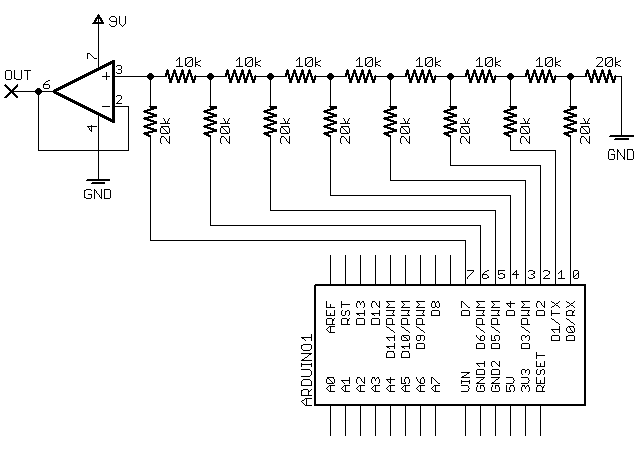
It’s true – I love DACs. There’s something awesome about the role they play, translating information from one paradigm over to another form. Sure, you can pick up a precision DAC chip with serial interface for a little over a buck, but building a barebones version from a handful of resistors is a pretty dang sweet trick. If you’ve never built one, I do recommend it. Doing so has a way of demystifying all sorts of related circuits and processes.
Worth noting: If you’re looking for precision, you’re best off sticking with premade DAC ICs. Resistor tolerance alone can have a massive influence on an R-2R DACs output. Adding an op amp configured as a voltage follower will also do wonders for stability.
Update: As promised, here’s the schematic for buffering the R-2R DAC – quite simple, actually:
Why do we need a buffer, you ask? Well without proper protection, any device connected directly to the resistor DAC will effectively act like another resistor and therefore distort our DAC’s output. By using an operational amplifier configured as a voltage follower, we recreate the resistor ladder’s output voltage while keeping it free from outside influence.
Do note that the op amp buffer in the schematic is powered by a voltage level higher than our DAC’s maximum output – this ensures we have enough headroom to accurately recreate voltages approaching and including 5V. For more helpful info on the topic be sure to check out Ikalogic’s page on the subject.
Subscribe to the MAKE Podcast in iTunes, download the m4v video directly, or watch it on YouTube and Vimeo.
ADVERTISEMENT






